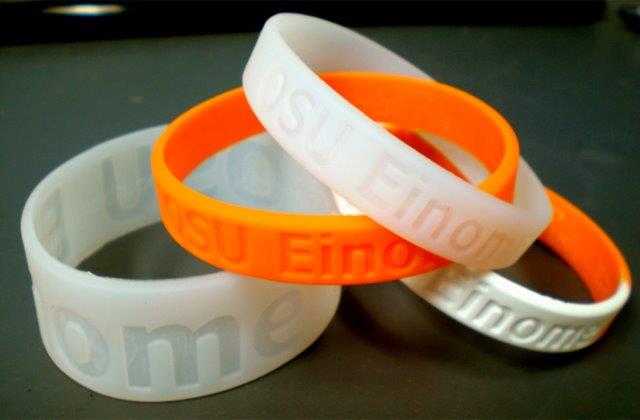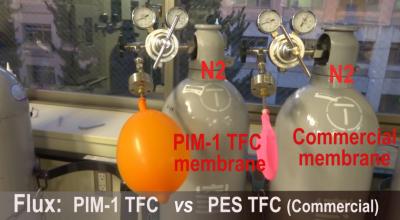
“Silicone Wristbands as Personal Passive Samplers“
From “Livestrong” to “Purple Paws,” trendy wristbands have come to represent causes from cancer to ending cruelty to animals. Add a new wristband of a different sort: one that could close the loop on determining the potential disease risks of exposure to substances like pesticides. Scientists reported the development in the ACS journal Environmental Science & Technology.
Kim Anderson and colleagues note that people breathe, touch and ingest a mix of many substances at low levels every day. But figuring out if natural and synthetic compounds can lead to disease is difficult. Thousands of these compounds are in common consumer products and industrial processes, but not all of them have been tested for toxicity. Research suggests that there’s a link between some of these substances and human health problems. However, establishing cause and effect definitively requires long-term measurements. Currently, people monitor exposure with heavy backpack samplers, questionnaires or with stationary devices, which all have disadvantages. Anderson’s team looked for a better way to more accurately assess an individual person’s exposure to possible toxins.
For a solution, they turned to commercially available wristbands because they’re made of silicone, which absorbs a wide range of compounds. After volunteers wore (modified) cleaned wristbands for various periods of time, the scientists could measure what the silicone had absorbed: 49 different substances, including polycyclic aromatic hydrocarbons (PAHs), some of which have been linked to cancer, plus compounds from pesticides and consumer products. “We can screen for over 1,000 chemicals that may accumulate in the wristbands,” says Anderson. “Currently, PAHs, pesticides, flame retardants, PCBs, industrial chemicals and consumer and pharmaceutical products have been quantified in wristbands.” They conclude that the bands could be a valuable tool for finally determining individual exposures and what compounds are safe and which ones come with risk.
The Latest on: Personal Passive Samplers
[google_news title=”” keyword=”Personal Passive Samplers” num_posts=”10″ blurb_length=”0″ show_thumb=”left”]
via Google News
The Latest on: Personal Passive Samplers
- Why has bird flu in the US spread to cows and what’s the risk for humans?on May 10, 2024 at 4:24 am
Could a global pandemic of bird flu, which has hit birds and cattle in the United States, spread widely to humans?
- Case 14-2024: A 30-Year-Old Woman with Back Pain, Leg Stiffness, and Fallson May 8, 2024 at 3:24 pm
A 30-year-old woman was evaluated because of back pain, leg stiffness, and falling. Tone was increased in the legs. Exaggeration of the normal lumbar lordosis was seen on MRI. A diagnosis was made.
- 4 realistic steps to starting a passive income side hustle: What social media may not tell youon May 8, 2024 at 12:01 pm
Starting a passive income side hustle may look different in real life than on TikTok. Four experts share the time, insight and steps they took to launch their own.
- Skullcandy Barrel review: a boombox that won’t blow up your walleton May 8, 2024 at 6:30 am
That said, it is quite a bit bigger, its sleek zeppelin shape and bright orange side-firing passive woofers do look unique ... distorted guitars, and tweaky samples — the Barrel pulls it off with ...
- 'Probable' carcinogens found inside cars. Should you be worried?on May 7, 2024 at 4:12 pm
A new study suggests that potential carcinogens linked to neurological issues, hormone disruption, and cancer-related death may be inside many cars, especially in the summer.
- A tough economy does not necessarily equal poor investment returnson April 29, 2024 at 3:38 am
Pertinent samples here include the market share swings we have seen ... In the process, the environment may soon become more challenging for passive investors and others who rely on the recent past to ...
- Index funds vs. mutual funds: A comparative guideon April 26, 2024 at 12:02 pm
sometimes just a sampling. The ultimate goal is to mirror the overall index's performance and deliver similar returns to the fund's investors. Index funds are passive investments that don't ...
- How Much is Six Figures + Common Six-Figure Jobson March 20, 2024 at 7:05 am
Some writers submit a few assignments for free to establish samples they can use to pitch for paying jobs ... can also be earned by combining multiple income streams or generating passive income ...
- 17 Successful Strategies to Make Money Onlineon March 13, 2024 at 4:27 am
But once you hit publish, your ebook has passive-income potential ... you should have a portfolio with a few writing samples to share with potential clients. You can create a free writing ...
- 10 Best Index Funds for 2024on February 26, 2024 at 10:27 pm
We started with Morningstar's U.S. Index Funds pick list, which includes top-rated domestic passive funds from small ... such as J.P. Morgan Personal Advisors, for more guidance.
via Bing News










